Are you ready to tackle the pressing issue of construction waste management? This letter template will guide you in developing a comprehensive plan that not only meets regulatory requirements but also promotes sustainable practices. With the construction industry generating a significant amount of waste, it's essential to implement strategies that minimize environmental impact while maximizing efficiency. So, let's dive in and discover how you can create an effective waste management plan that can set your project apart!

Project Overview and Scope
Effective construction waste management is essential in modern building projects to minimize environmental impact and promote sustainability. The project overview encompasses a comprehensive plan for the XYZ Development at 123 Main Street, aimed at erecting a mixed-use complex comprising residential units and commercial spaces over a 12-month timeline. Scope includes waste reduction strategies, recycling protocols, and proper disposal methods facilitating the responsible management of materials such as concrete, metal, wood, and drywall. The plan outlines specific targets, including a waste diversion rate of 75%, aligning with municipal regulations in Springfield to ensure compliance and promote ecological stewardship. Key stakeholders, including project managers, contractors, and local recycling facilities, will proactively collaborate to track waste generation metrics and implement innovative reduction techniques throughout the construction process.
Waste Identification and Classification
Effective construction waste management plans require precise waste identification and classification to minimize environmental impact. Construction projects, such as building developments in urban areas like New York City, generate significant amounts of waste, including concrete, asphalt, wood, metals, and hazardous materials like asbestos or lead-based paints. The Waste Classification framework categorizes these materials into different groups based on their properties and disposal requirements, often following local regulations set by authorities like the Environmental Protection Agency (EPA). Accurate identification, utilizing tools such as waste audits and manifests, can help classify materials into reusable, recyclable, and landfill-bound categories, ensuring compliance and promoting sustainability in construction practices. Proper sorting and disposal strategies are crucial for reducing landfill contributions and enhancing resource recovery, creating a more sustainable construction industry.
Waste Reduction and Recycling Strategies
A comprehensive construction waste management plan is essential in minimizing the environmental impact of construction activities at sites such as commercial buildings or residential projects. Effective waste reduction strategies include implementing a system for source separation of recyclable materials like concrete, metals, and wood, which can significantly reduce landfill contribution. Recycling initiatives for materials, particularly in metropolitan areas like New York City or Los Angeles, can yield high percentages of reclaimed resources, promoting sustainable practices. Local partnerships with recycling facilities ensure proper processing of waste, helping to adhere to regulations set forth by environmental agencies. Regular training sessions for staff on waste management protocols can enhance awareness and adherence, ultimately leading to a reduction in waste generation, commitment to sustainability, and compliance with waste diversion targets.
Roles and Responsibilities
A well-structured construction waste management plan outlines the roles and responsibilities of key personnel involved in the recycling and disposal of materials at the construction site. Project Manager oversees overall waste management strategies, ensuring compliance with local regulations, including the Waste Management Act of 1996. Site Supervisor monitors daily waste collection processes and coordinates with waste disposal contractors, prioritizing efficiency and adherence to safety protocols. Environmental Compliance Officer conducts regular audits and assessments of waste disposal practices, ensuring alignment with environmental regulations such as the Environmental Protection Agency's guidelines. All construction workers are trained on waste segregation practices to minimize landfill contribution and maximize recycling efforts. Additionally, stakeholders, including architects and engineers, must collaborate on sustainable design practices that reduce waste generation at the source and promote circular economy principles throughout the project lifecycle.
Monitoring and Reporting Procedures
A comprehensive construction waste management plan must include robust monitoring and reporting procedures focused on tracking waste generation and disposal. Regular site inspections (conducted weekly or bi-weekly) ensure compliance with local regulations, such as the Waste Management Act, and identify areas for improvement. Utilizing waste tracking software, like WasteLogix, allows for accurate documentation of waste types (recyclables, hazardous materials, and general waste) and quantities generated (measured in tons). Each month, project managers, such as John Doe of ABC Construction, should compile a report summarizing waste data, including disposal methods employed (landfill, recycling, and composting) and percentages diverted from landfills (aiming for a minimum of 50%). Feedback meetings (held quarterly with stakeholders) foster continuous improvement by addressing challenges, sharing best practices, and revisiting project goals, ultimately promoting sustainability within the construction industry.
Letter Template For Construction Waste Management Plan Samples
Letter template of construction waste management plan evaluation feedback
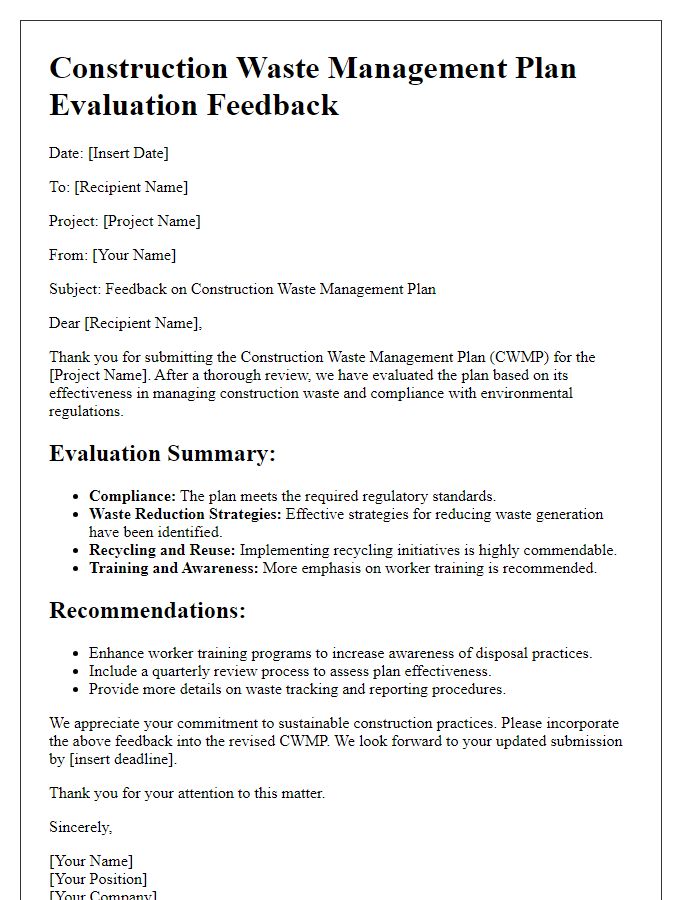

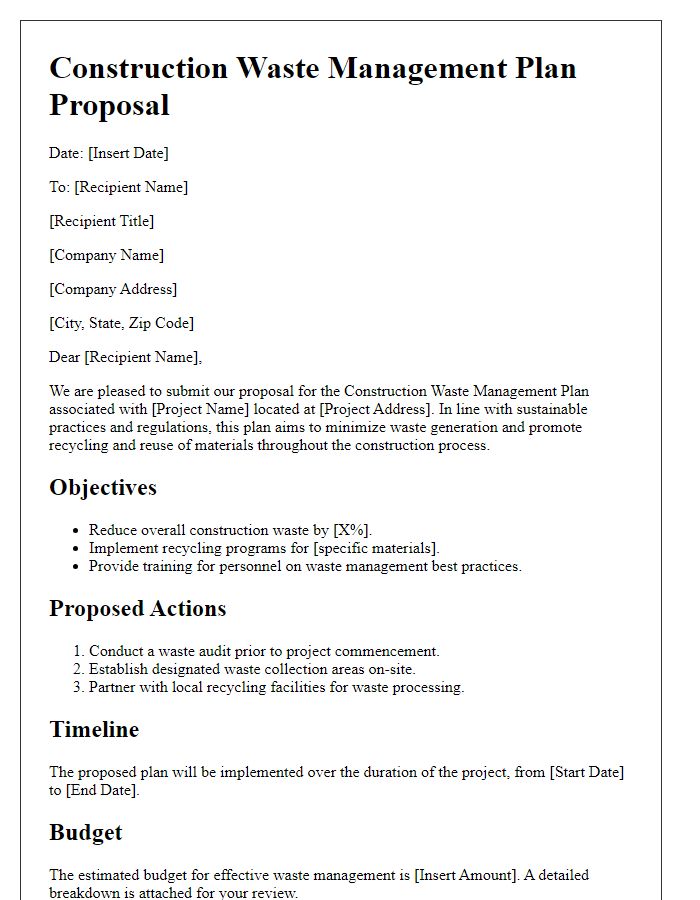
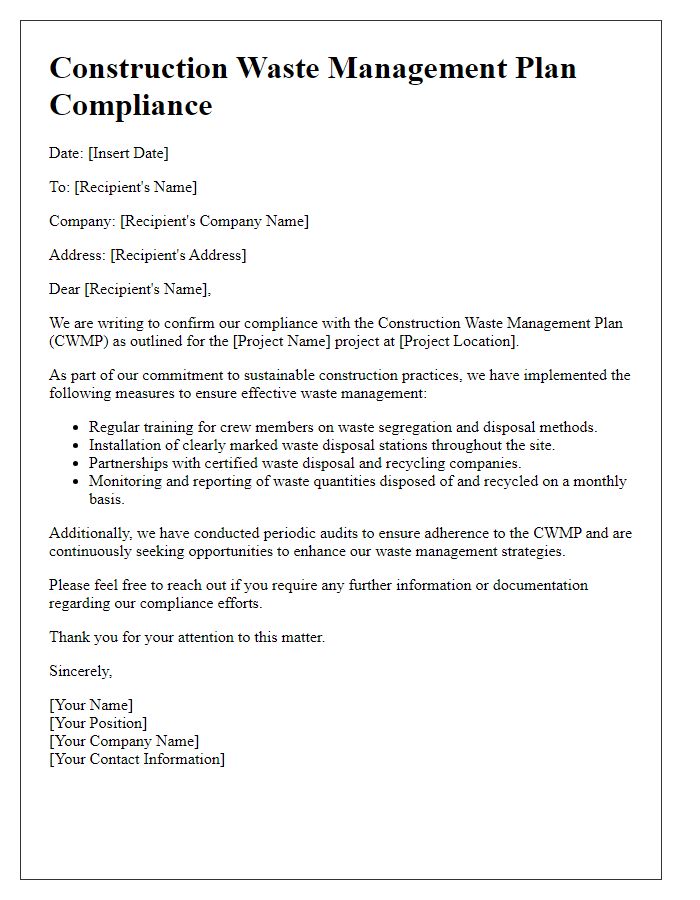
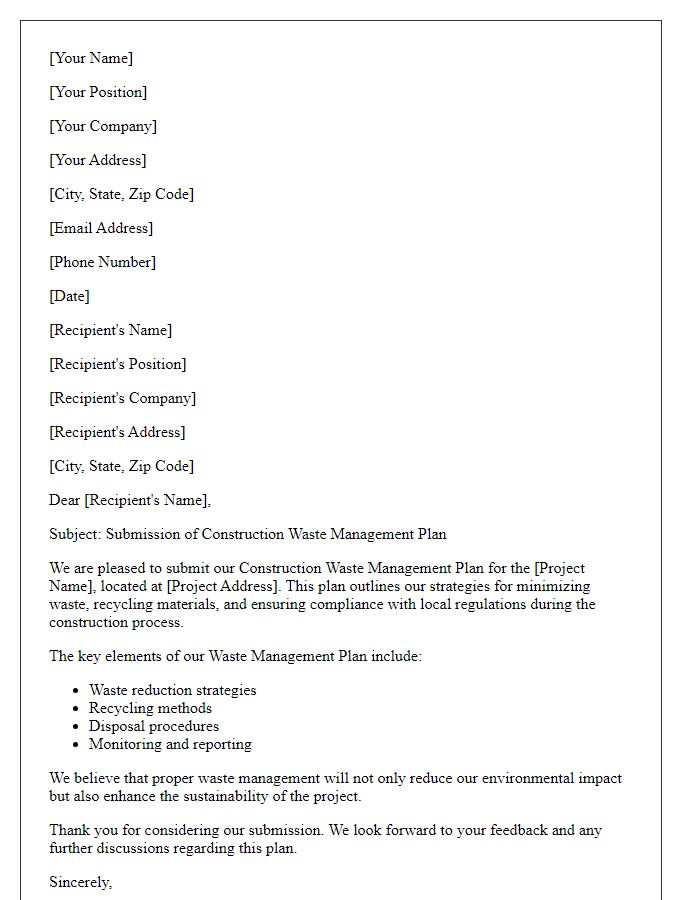
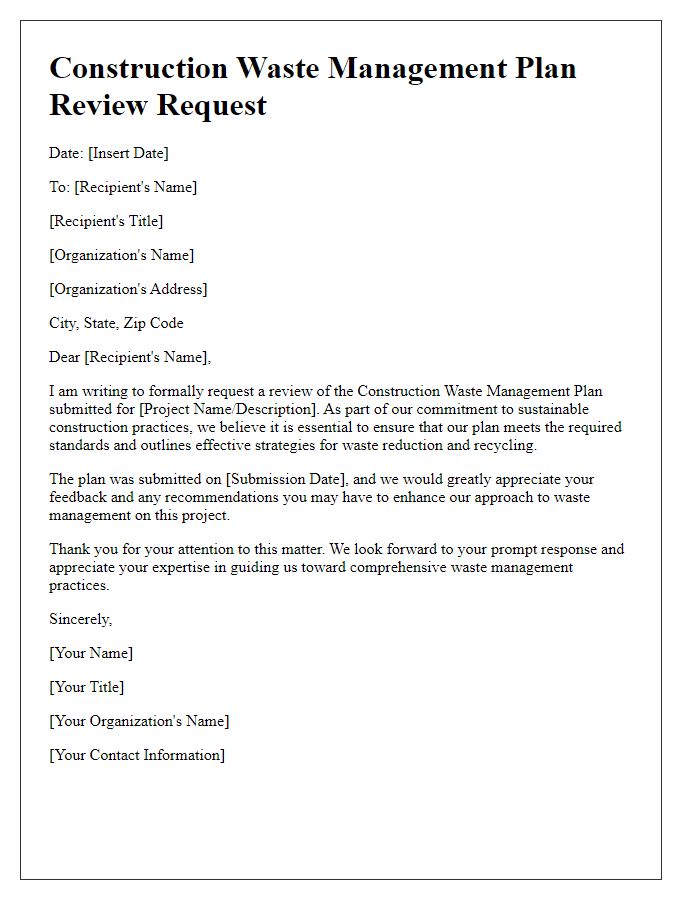
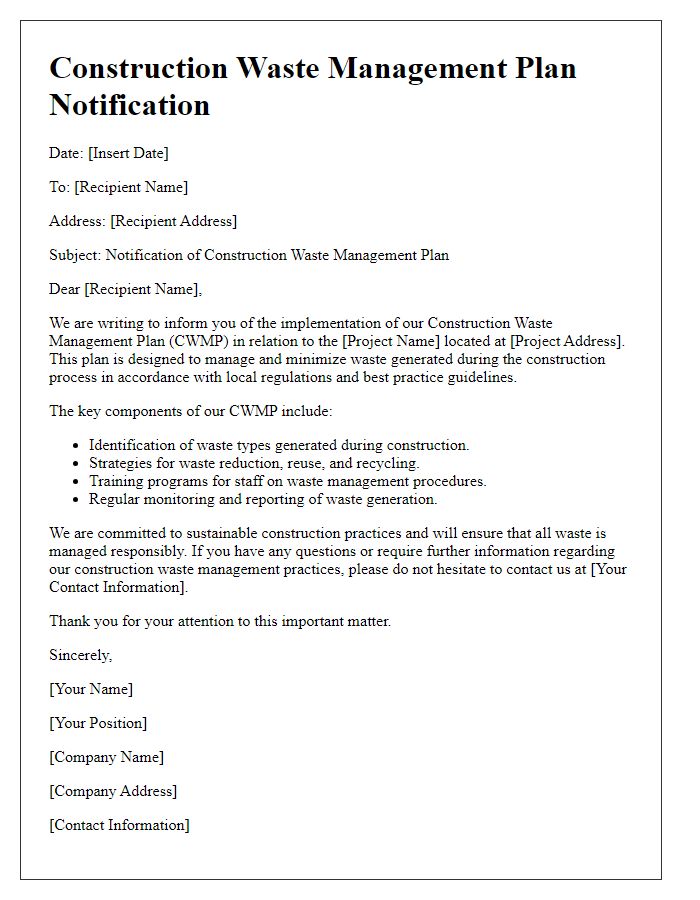
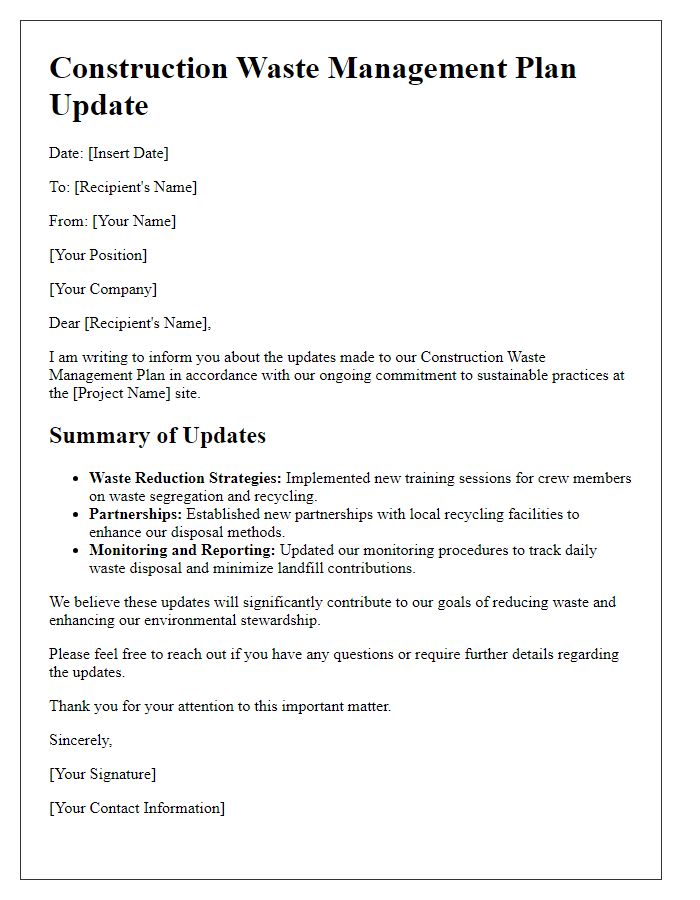
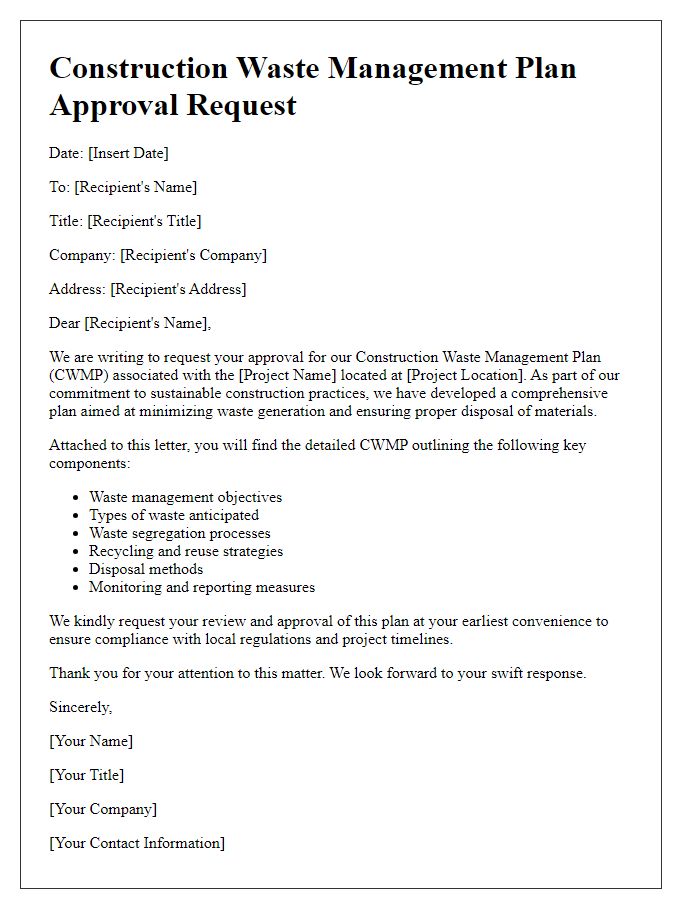
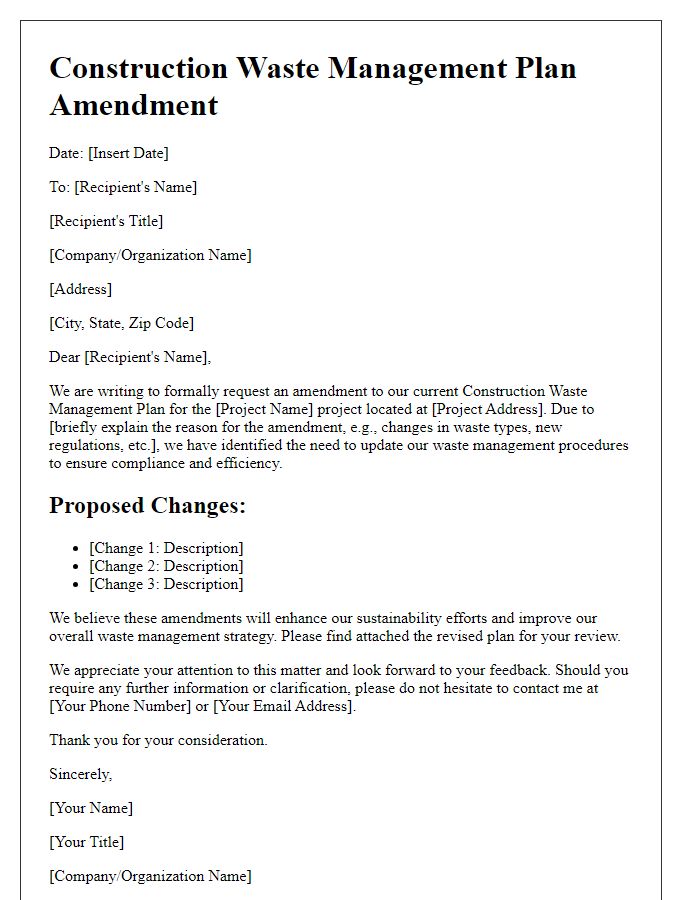
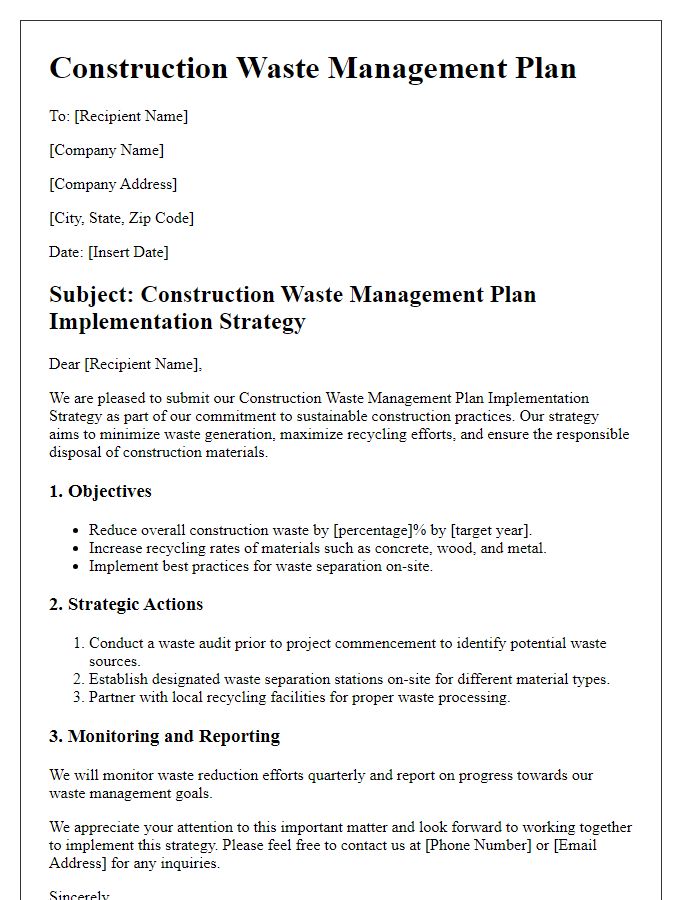


Comments